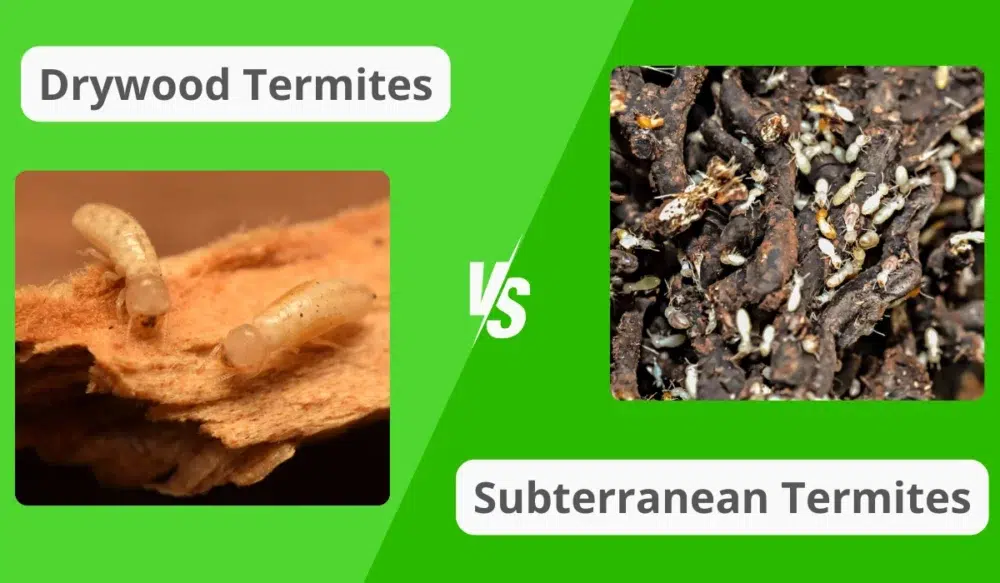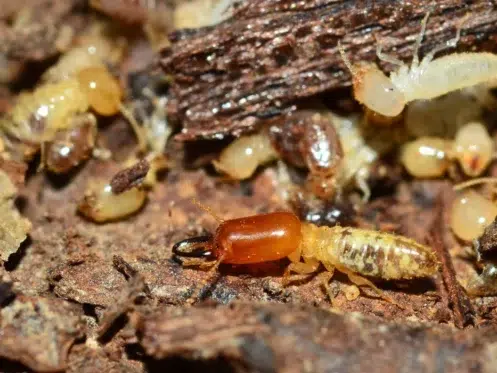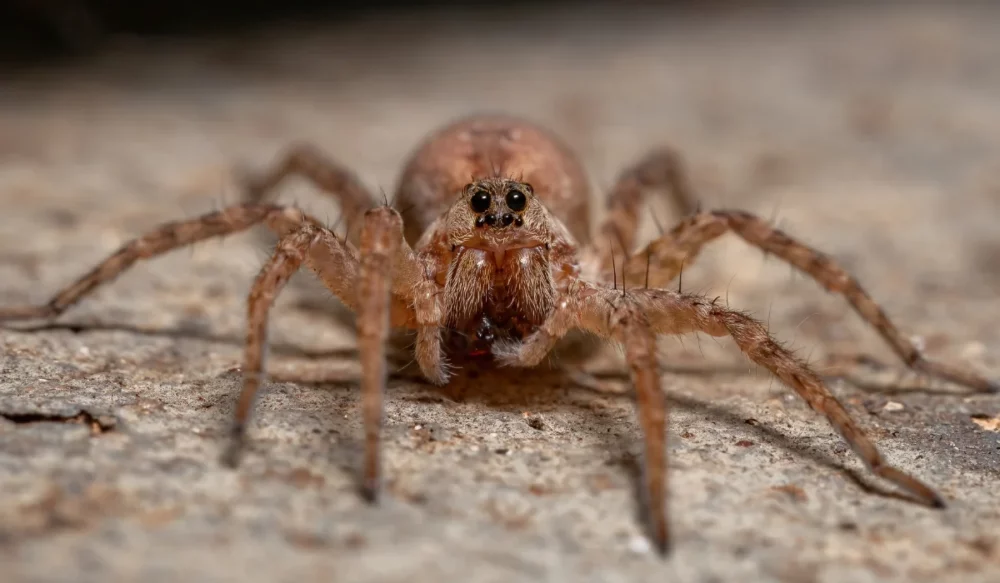If you’ve spotted what looks like sawdust on your windowsill or mud tubes near your foundation, you might be dealing with termites—but which type? Arizona homeowners often face two destructive species of termites: drywood termites and subterranean termites.
While both can lead to significant damage to wooden structures, they live and feed very differently.
Let’s dig into how these termite species differ—and what you should do if you think either one is inside your home.
Key Takeaways
- Drywood and subterranean termites are different in how they live, how they enter, and what damage they cause.
- Frass piles, mud tubes, blistered paint, or flying termites are signs that mean termites might be in your home.
- A pest control expert should inspect the signs so they can figure out the species and recommend the right fix.
- Arizona homeowners can count on pest control companies for expert termite treatment that protects wood and stops new colonies.
Drywood vs. Subterranean Termites: Key Differences

If you’re wondering how drywood and subterranean termites actually stack up, here’s a side-by-side look at what sets them apart:
| Features | Drywood Termites | Subterranean Termites |
|---|---|---|
| Colony Location | Inside dry, infested wood | Underground soil or crawl spaces near wood |
| Entry Point | Directly into wood via crevices or vents | From soil via mud tubes or mud tunnels |
| Moisture Needs | Low; thrive in dry wood | High; need soil moisture to survive |
| Termite Damage Pattern | Smooth galleries inside wood; cuts across grain | Rough tunnels with soil inside; follows grain |
| Treatment Methods | Spot treatments, fumigation | Bait stations, trench and treat systems |
| Colonies | Small; live within the wood | Large subterranean termite colonies underground |
| Food Source | Dry wood rich in cellulose | Any moist wood termites can reach via the soil |
What to Do If You Suspect Termites
Spotting termite activity isn’t always straightforward. Whether it’s sawdust, droppings, or suspicious blisters on paint, here’s how to handle what you’re seeing.
You’ve Found Frass or Pellets Near Wooden Structures
These fecal pellets—which often resemble ground pepper or sawdust—signal a drywood termite infestation. Drywood termite colonies live entirely within the wood they feed on.
Unlike subterranean termites, they don’t need soil contact, so they eject frass through small holes to keep their tunnels clean. These kick-out spots are a strong clue.
Avoid sweeping up the frass right away. Showing it to your pest control technician during a termite inspection can help confirm the species.
You’ve Spotted Mud Tubes or Mud Tunnels Around the Foundation
If you see pencil-sized tubes running up your walls or foundation, you’re likely dealing with a subterranean termite infestation. These tubes are built by worker termites to travel safely between the termite nest in the soil and your home.
Breaking open a tube can reveal live termites—often creamy white with straight antennae and powerful mandibles.
Whether or not they’re active, mud tubes should be evaluated immediately by a pest control professional.
Your Windowsills or Baseboards Show Bubbling or Blistering
These can be signs of structural damage from termites feeding just below the surface.
In Arizona, it’s commonly caused by subterranean termites, which access wood through mud tubes. Over time, their tunneling creates soft spots and blisters that may resemble water damage.
Because these termites operate out of sight, damage can accumulate before you see outward symptoms.
You’ve Found Winged Flying Termites Indoors
Swarmers—or alates—are reproductive termites sent out to start new colonies. If you spot them indoors, especially around lights or windows, that often means the entire colony is already living inside your home.
Drywood termite swarmers tend to be larger and darker, often dark brown, while subterranean termite swarmers are smaller.
Keep one in a jar if possible—identifying the species of termites helps narrow down your treatment options.
You Live in an Older Arizona Home Without Termite Prevention
Homes in Phoenix, Chandler, Scottsdale, and Tucson are especially vulnerable. Even newer homes are at risk if termite treatment wasn’t part of the build process.
Arizona’s desert climate, mixed with the monsoon season, is a perfect storm for Formosan and eastern subterranean termites, two highly destructive species.
Even if you haven’t seen flying termites or mud tubes, it’s worth scheduling annual termite inspections as a preventative measure.
Professional Termite Control in Arizona
If you suspect termites, don’t wait. At Green Home Pest Control, we specialize in pest management tailored to the specific types of termites in Arizona.
For subterranean termites, we use bait stations or apply liquid treatments around the foundation. These methods break up the colony’s access to your home while using their own castes of worker termites to spread the material.
For drywood termite infestations, options vary based on the severity. Spot treatments may work for small, isolated colonies, but widespread issues may call for fumigation to reach every hidden tunnel and crack.
Not sure what’s going on behind your walls?
Give us a call or schedule a termite inspection today.
Our licensed pros can inspect infested wood, identify signs of drywood termites or subterranean activity, and recommend treatment methods that work for your home and budget.



